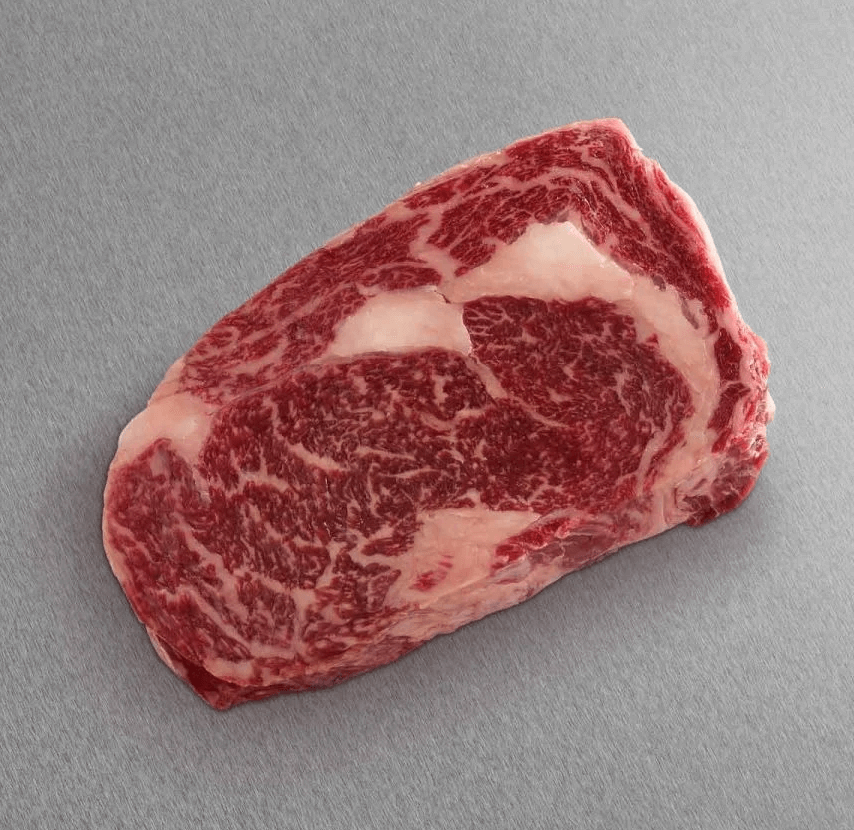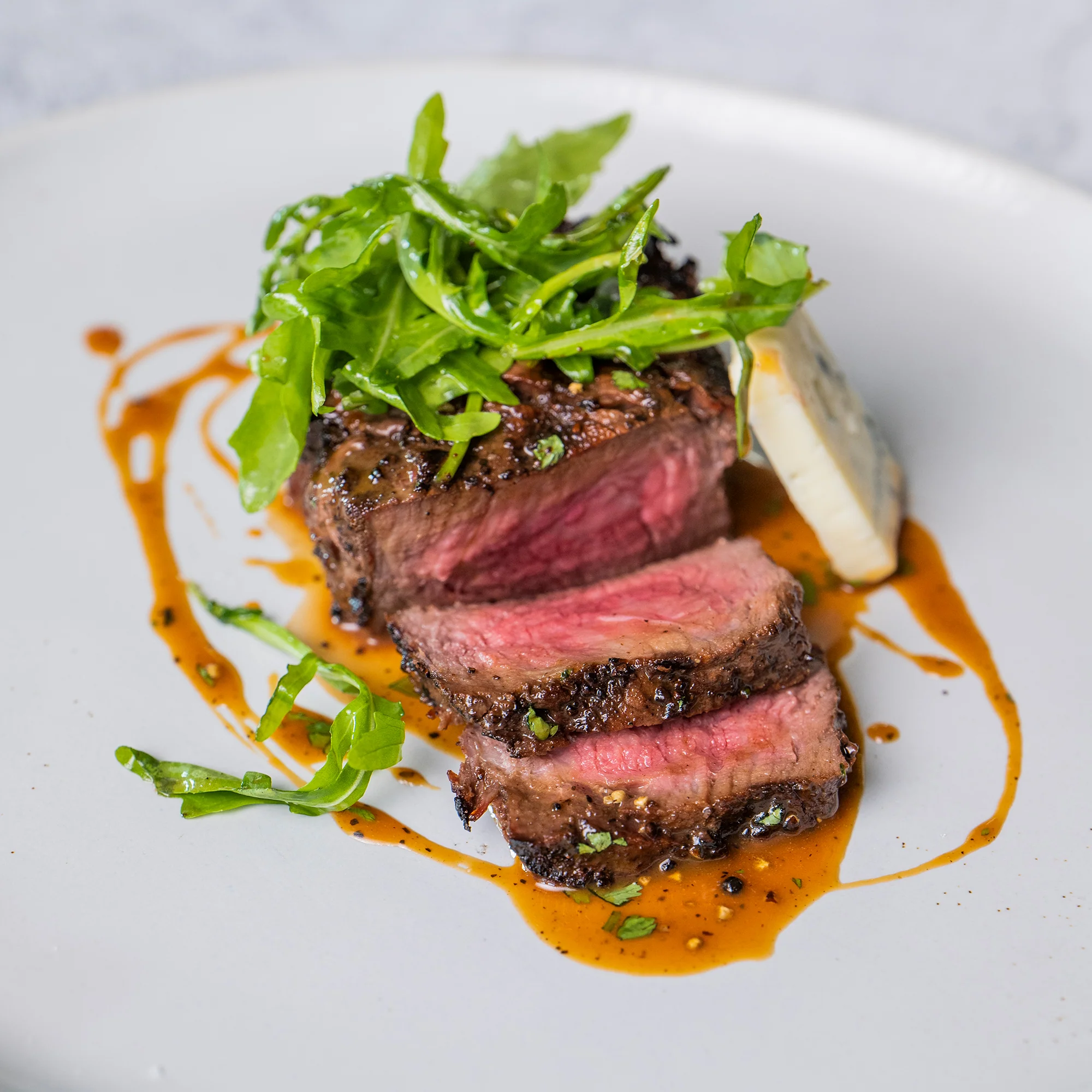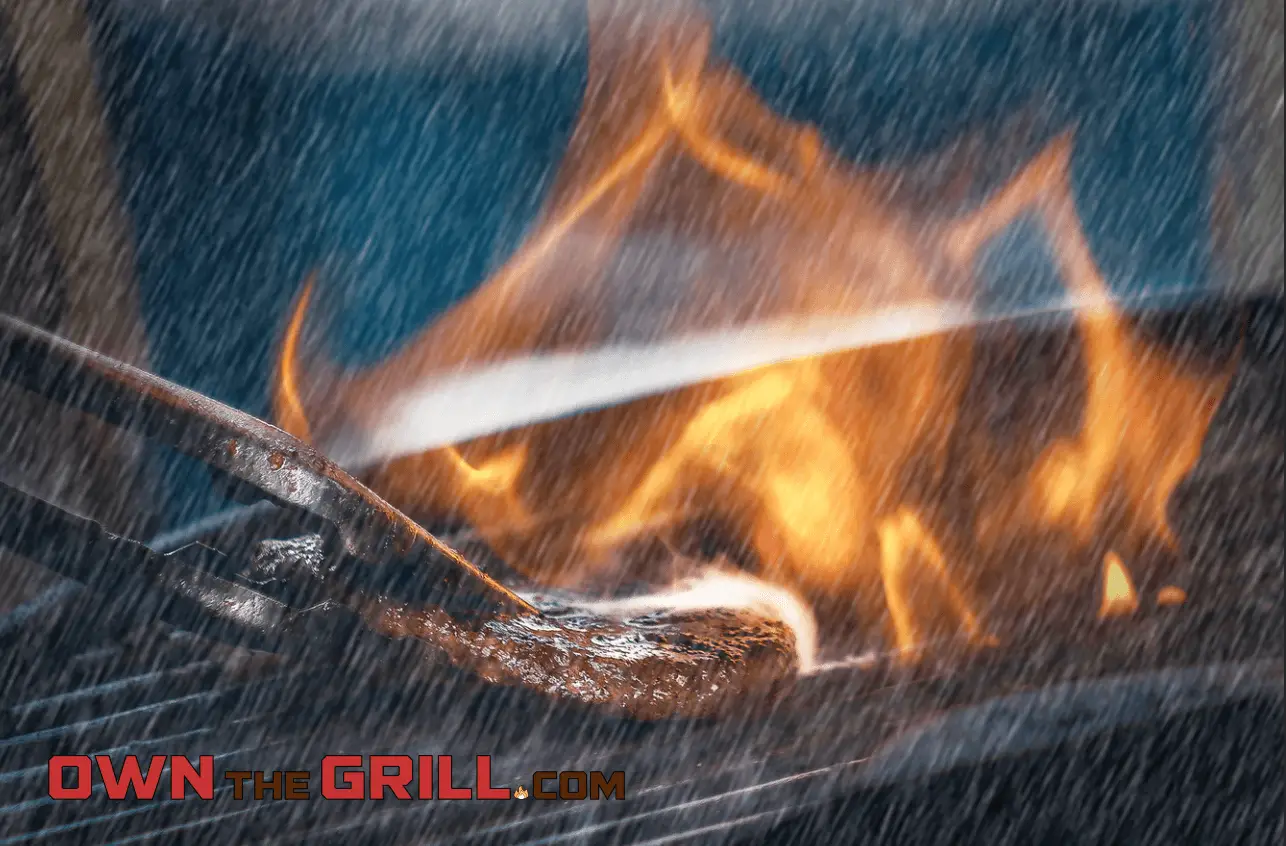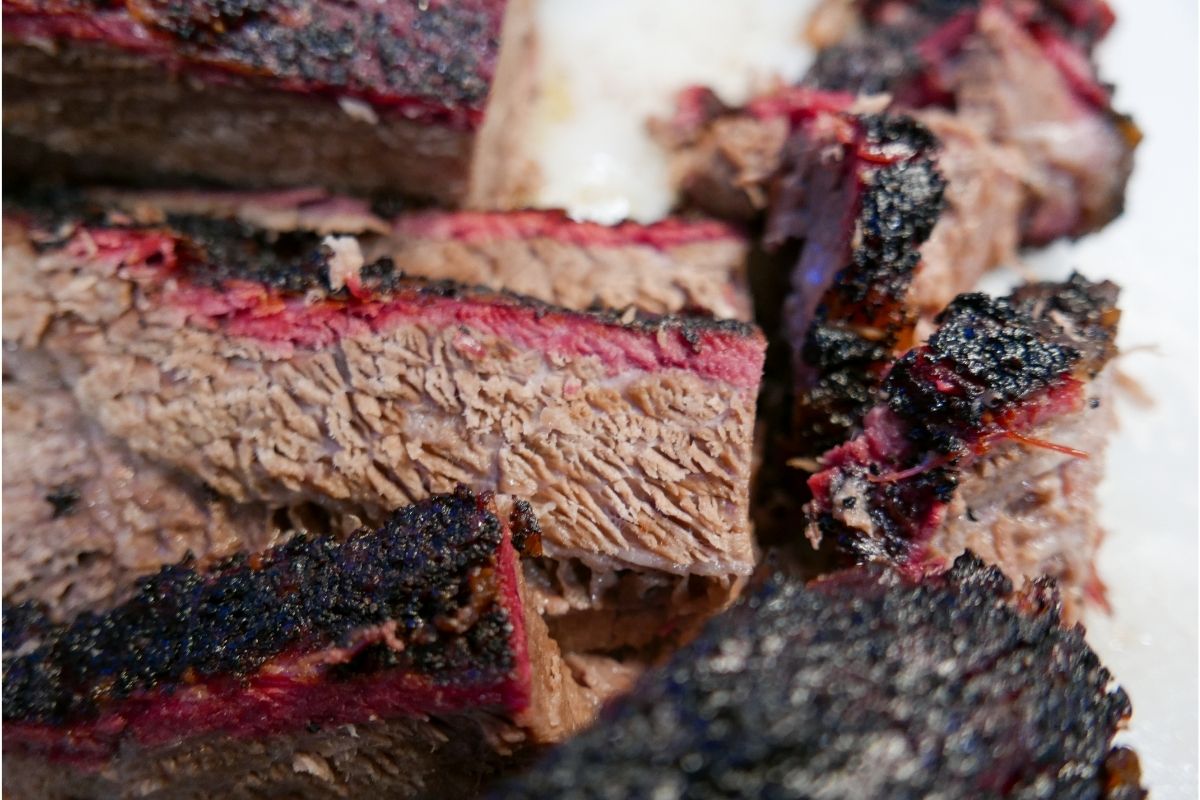When it comes to premium cuts of beef, most grill masters will have to choose between ribeye vs filet mignon. These two steaks are prized in steakhouses and backyard grills alike, and are offered through some of the best mail order steak companies out there, but they’re quite different when it comes to flavor, texture, fat content, and cooking style. Whether you’re prepping a weeknight meal or hosting a special occasion, knowing the differences between these two cuts will help you grill like a pro and serve up the perfect steak every time.
Understanding the Cuts
Before diving into flavor and technique, it’s helpful to understand where these steaks come from. The source of the cut heavily influences how it tastes and cooks.
Ribeye
The ribeye comes from the cow’s rib section, specifically ribs six through twelve. It includes a healthy amount of marbling — thin streaks of intramuscular fat that make ribeye rich, juicy, and full of beefy flavor. This fat renders during cooking, giving ribeye its signature sizzle and buttery texture.
Ribeyes can be boneless or bone-in. The bone-in version is sometimes labeled a cowboy steak or tomahawk steak, and the bone helps insulate the meat, creating an even richer flavor. This cut is ideal for people who love a hearty, flavorful steak with a little chew.
Snake River Farms' top of the line ribeye steak is hand cut to 1.5" thick. Over 1,800+ 4.5 star reviews.
Filet Mignon
Filet mignon is taken from the tenderloin, a long, cylindrical muscle tucked beneath the ribs and along the spine. This muscle does very little work, which is why filet mignon is exceptionally tender. In fact, it’s the most tender cut of beef you can buy.
But filet lacks the fat that gives ribeye its bold taste. It’s mild, lean, and often served with sauces or wrapped in bacon to add richness. Filet mignon is typically cut thick and benefits from precise cooking to avoid drying out.
The filet mignon is an extremely tender cut with the buttery texture and aroma of American Wagyu. 3,900+ 5 star reviews!
Flavor and Texture Comparison
Flavor and texture are where ribeye and filet part ways. Both are delicious in their own right, but they offer very different eating experiences.
- Flavor: Ribeye wins when it comes to depth and intensity of flavor. The high fat content melts during cooking, coating the meat in juicy, savory richness. Filet mignon is more delicate and subtle. It has a clean, almost buttery flavor, making it the perfect blank canvas for sauces, compound butters, or a crust of herbs and spices.
- Texture: Filet mignon is unrivaled in tenderness. You can practically cut it with a fork. Ribeye, while still tender, has a more substantial chew and meatier texture, especially around the fat cap and spinalis (the most prized, tender, and flavorful part of the ribeye).
Nutritional Breakdown
If you’re watching your macros or just curious about what you’re eating, here’s how these steaks compare nutritionally.
- Ribeye (100g): ~291 calories, 21.8g fat, 24g protein
- Filet Mignon (100g): ~218 calories, 11g fat, 26g protein
Ribeye has significantly more fat and calories, but that’s where its flavor comes from. Filet mignon is leaner and higher in protein per calorie, which makes it a popular choice for those seeking a lighter meal or following a stricter diet.
Cooking Techniques
Both ribeye and filet mignon deserve proper technique to reach their full potential. Knowing how to handle each cut is key.
Ribeye
Ribeye’s fat content makes it forgiving on the grill or in a cast iron skillet. High heat helps caramelize the outer crust while rendering the interior fat. Grill it over direct heat, then finish it with indirect heat to ensure the center cooks evenly.
For pan-searing, go with a hot cast iron pan, salt and pepper, and perhaps a touch of butter and rosemary to baste. Ribeye is best enjoyed medium-rare to medium — just enough to melt the fat and bring out its full flavor.
Filet Mignon
Filet mignon requires a bit more finesse. Because it’s lean, it can dry out quickly if overcooked. Start with a sear on high heat to build a crust, then finish it in the oven or over indirect heat to gently bring it up to temperature.
Many chefs serve filet rare to medium-rare. Wrapping it in bacon adds both flavor and insulation. It’s also excellent with sauces like béarnaise, peppercorn, or red wine reduction.
Price Differences
Filet mignon is almost always more expensive than ribeye on a per-pound basis. That’s because each animal yields only a small amount of tenderloin. Its luxurious texture and limited supply make it a high-end restaurant favorite.
Ribeye is still a premium cut but offers more value for flavor lovers. You get a larger portion with bold taste, and it’s often more affordable than filet per ounce.
Pairings and Presentation
Think about sides, drinks, and presentation. Ribeye’s richness pairs well with bold reds like Cabernet Sauvignon or Syrah and can stand up to creamy mashed potatoes or grilled vegetables. Filet’s delicate nature goes well with Pinot Noir, roasted asparagus, and lighter fare like herb-infused rice or risotto.
Consider how you plate the steak too. Filet looks elegant when sliced into medallions, while ribeye often makes an impressive presentation served whole or carved tableside.
Final Verdict
There’s no wrong answer when choosing between ribeye and filet mignon. It really depends on what you’re after:
- Want bold flavor and juicy fat? Go ribeye.
- Prefer a lean, melt-in-your-mouth texture? Choose filet mignon.
At the end of the day, both are premium steaks worthy of your grill. If you really want to impress, serve both and let your guests decide — a steak tasting flight is never a bad idea.
Which steak is more flavorful, ribeye or filet mignon?
Ribeye is more flavorful due to its higher fat content and marbling. That fat melts during cooking, infusing the steak with rich, beefy flavor that filet mignon can’t match on its own.
Which steak is more tender?
Filet mignon is the most tender cut of beef, with a buttery, melt-in-your-mouth texture. Ribeye is also tender, but has a chewier, meatier bite.
Which steak is leaner?
Filet mignon is significantly leaner than ribeye. It contains less fat and fewer calories, making it a popular choice for lighter meals or clean-eating diets.
Can I cook both steaks on the grill?
Yes, both cuts are excellent on the grill. Ribeye handles high heat well, while filet mignon benefits from indirect heat or reverse searing to avoid overcooking.
Which is better for pan-searing?
Both cuts are great for pan-searing, though filet mignon is often finished in the oven. Ribeye can be cooked entirely on the stove due to its fat content, which helps with even cooking.
Why is filet mignon more expensive than ribeye?
Filet mignon comes from a smaller section of the cow and is highly prized for its tenderness, making it rarer and more expensive. Ribeye is more abundant and offers great flavor at a better price point.
Is ribeye or filet better for steak lovers who enjoy sauce?
Filet mignon is better suited for sauces since its mild flavor takes on added ingredients well. Ribeye typically needs little more than salt, pepper, and perhaps a pat of butter.
Which cut is better for special occasions?
Filet mignon is often chosen for special occasions because of its luxurious texture and elegant appearance. Ribeye works well too, especially if your guests appreciate bold flavors.
Can I sous vide both cuts?
Yes, both cuts respond beautifully to sous vide cooking. This method allows for perfect edge-to-edge doneness, especially helpful with filet mignon to avoid overcooking.
Which is easier to cook for beginners?
Ribeye is a bit more forgiving thanks to its fat content, making it easier for beginners. Filet mignon requires more attention to avoid drying out.
Which steak is better for leftovers?
Ribeye tends to reheat better due to its fat content, which helps preserve flavor and texture. Filet can dry out more quickly if not reheated gently.
Is bone-in ribeye better than boneless?
Bone-in ribeye (like a cowboy or tomahawk steak) offers slightly more flavor and makes for an impressive presentation. Boneless ribeye is easier to cook evenly and quicker to grill.
Can I use dry rubs on both?
Absolutely. Ribeye can handle bold rubs like coffee, chili, or garlic-heavy blends. Filet works better with lighter herb-forward or pepper-based rubs to enhance its subtle profile.
Which steak is better for keto or low-carb diets?
Both are great choices for keto or low-carb lifestyles. Ribeye offers more fat, which is desirable for keto, while filet provides a leaner protein source.
Are there alternative cuts similar to these?
For ribeye lovers, try chuck eye or Denver steak. For filet fans, consider the petite tender or top sirloin filet as budget-friendly alternatives.
Watch a Pro Break It Down
Here’s a great video that visually compares these two legendary cuts, including cooking tips.
Discover more from Own The Grill
Subscribe to get the latest posts sent to your email.






